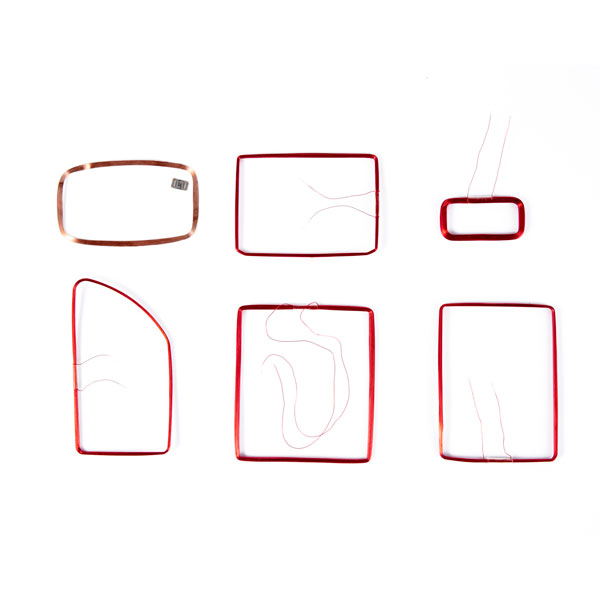Most manufacturers have realized that radio frequency identification (RFID) technology can serve the supply chain well, but they often overlook that this technology can also bring huge benefits in the manufacturing process. RFID can deal with many manufacturing challenges, including safety, quality control, production execution and asset management. When applying this technology in a manufacturing environment, the focus is not on tags and readers, but on the data that can be obtained through this technology. The purpose of this is to allow manufacturers to obtain data through RFID technology and use the information to further improve their competitive advantage.
The manufacturing process is a particularly good link that can play the value of RFID and obtain return on RFID investment, because RFID tags are used in a closed-loop environment where RFID tags can be reused. RFID can bridge the gap between manufacturing execution systems (MES), enterprise resource planning (ERP) systems, and production workshops. Compared with other alternatives, the technology can provide more accurate and timely data.
Security RFID can be used for the security management of the factory workshop, it can replace the password required for access and parameter changes, log in and log out for the operator in the application; enable multiple operators with different security requirements work at the same node; or provide help when the director forgets to log out. RFID can link users, machines, and tasks together, and only designated personnel can maintain and operate equipment. It also allows users to view and track the work tasks of employees to ensure the quality and safety of work.
General Motors' European car manufacturer OPEL uses RFID technology to deal with safety issues. The production process requires computers and systems to configure special production through about 650 programs to coordinate different production steps. Nowadays, every worker has a transponder with a glass shell on his key ring. This shell protects against dust, moisture, shock and high temperatures. If someone wants to access the control panel of a specific machine, the reader must verify the transponder in the person's hand to confirm the identity before accessing the control panel. By using RFID technology, the company has achieved the goal of reducing input errors, monitoring and recording mission logs, and protecting sensitive data in the system. The tag ID uses time and date stamps to record system information changes, so that when a problem occurs, the cause can be analyzed from the created historical record.
Quality control companies are always looking for ways to improve quality. When certain materials are required in the production process, when production needs to be carried out according to a certain plan, or when certain sensitive materials required for production are exposed to high temperatures or have expired, RFID technology may be a good solution. RFID tags can track the entire production process of a product and report data on demand at key stages. In addition, the data supported by RFID can meet the real-time data requirements of Six Sigma for statistics and data analysis.
A company uses RFID to monitor and inspect the production process. During the production process, 1,000 bottles are placed on a metal rack and then placed in an autoclave for 120°C sterilization. If there are questions about the time or temperature of sterilization, the entire batch must be destroyed. Previously, the tracking and control of product production was done manually, so errors may occur. In order to solve this problem, the company installed a conveyor system to automatically move the racks. RFID tags are used to track and inspect the sterilization process of each shelf, ensuring precise control of time and temperature during the sterilization process.
Manufacturing execution RFID can also provide users with real-time data needed for manufacturing execution. The RFID electronic tag with read-write function can modify and reconfigure the production steps according to the received materials and assembly parts. For example: BMW needs to carry out flexible car assembly in the factory, in this factory, each car is assembled according to the customer's customized order. There are different options for colors, engines, interiors and tires, and there may be hundreds of changes on the production line. The solution BMW is using is to stick RFID tags programmed according to the specifications of each car to the slide that carries each car. When the chute moves on each station, the operator or robot will read the information on the tag and assemble the required accessories or perform the required production process according to the data on the RFID tag.
Compared with other types of data collection methods, RFID can create more detailed product data information, down to batches, groups, or individual items. Manufacturers of processed meat and cheese use RFID for raw material and product tracking. When raw materials are received from each supplier, the operator installs RFID tags on the pallets or containers of the raw materials. The label is integrated into the data tracking system, which indicates which container will be used and when, and alerts when any container is about to expire.
Nowadays, RFID technology has been widely used in various industries, and there are many types of RFID electronic tags. Almost every application of RFID technology will produce a brand-new RFID electronic tag. Its strong appearance and plasticity also make RFID technology be able to adapt to more application scenarios. With the continuous change and innovation of RFID electronic label production technology, the production cost of its RFID electronic label has become very low, which means that the application threshold and cost of RFID technology are gradually decreasing. In the future, RFID technology will appear in all walks of life in different ways, changing the world in ways you can't imagine!




